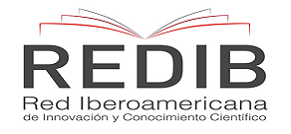Attention and motor response of middle blockers and their relationship with performance level in the Iraq Premier Volleyball League
Keywords:
Attention, Motor Response, Performance Level, VolleyballAbstract
The study aimed to examine the attention and motor response of middle blockers among volleyball players and their relationship with performance level in the Iraq Premier Volleyball League. The sample consisted of 14 volleyball players from Iraqi Premier League clubs, including Gaz Al Janoub, Al Bahri, Haditha, Balad, Erbil, Al Jaish, and Al Daghara, located in Basrah Governorate. The instruments used in this study included the Borden-Infimov test to measure attention manifestations, Nelson's test to evaluate translational motor response, and a specialized blocking test to assess blocking skills in volleyball. For data analysis, the researcher used the Statistical Package for Social Sciences (SPSS) version 21. The study found a significant relationship between certain aspects of attention and motor response and the performance level of the wall blocking skill (p<0.05). It also revealed significant differences in the defensive blocking skill performance levels among players from Iraq's elite league teams (p<0.05). Notably, the players from the South Gas Club, being national team players with more experience, ranked first in terms of performance level. The study suggests focusing on exercises to develop attention and motor response levels in volleyball players, implementing various tests to assess and improve their performance, and enhancing attention and motor response skills globally.
Downloads
References
Al-Arabi, A., & Al-Jamal, A. (1996). Mental training in tennis (1st ed.). Dar al-Fikr al-Arabi.
Allawi, R. (1994). Motor performance tests (3rd ed.). Dar Al-Fikr Al-Arabi.
Kakin, R. S. (2000). Comparison of some mental and physical abilities among volleyball players according to their specializations. University of Baghdad. [Baghdad, Iraq].
Katz, J. (1998). Vision training for the volleyball player. Performance Conditioning for Volleyball, 5(6), 68-83.
Morcos, A. H. (1994). Some aspects of attention and its relationship to the accuracy of handball shooting. College of Physical Education, University of Baghdad. [Baghdad, Iraq].
Downloads
Published
How to Cite
Issue
Section
License
Copyright and Licensing
For all articles published in Atena Journals, copyright is retained by the authors. Articles are licensed under an open access Creative Commons CC BY 4.0 license, meaning that anyone may download and read the paper for free. In addition, the article may be reused and quoted provided that the original published version is cited. These conditions allow for maximum use and exposure of the work, while ensuring that the authors receive proper credit.
Reproducing Published Material from other Publishers
It is absolutely essential that authors obtain permission to reproduce any published material (figures, schemes, tables or any extract of a text) which does not fall into the public domain, or for which they do not hold the copyright. Permission should be requested by the authors from the copyrightholder (usually the Publisher, please refer to the imprint of the individual publications to identify the copyrightholder).
Permission is required for:
- Your own works published by other Publishers and for which you did not retain copyright.
- Substantial extracts from anyones' works or a series of works.
- Use of Tables, Graphs, Charts, Schemes and Artworks if they are unaltered or slightly modified.
- Photographs for which you do not hold copyright.
Permission is not required for:
- Reconstruction of your own table with data already published elsewhere. Please notice that in this case you must cite the source of the data in the form of either "Data from..." or "Adapted from...".
- Reasonably short quotes are considered fair use and therefore do not require permission.
- Graphs, Charts, Schemes and Artworks that are completely redrawn by the authors and significantly changed beyond recognition do not require permission.
Obtaining Permission
In order to avoid unnecessary delays in the publication process, you should start obtaining permissions as early as possible. If in any doubt about the copyright, apply for permission. Atena Journals cannot publish material from other publications without permission.
The copyright holder may give you instructions on the form of acknowledgement to be followed; otherwise follow the style: "Reproduced with permission from [author], [book/journal title]; published by [publisher], [year].' at the end of the caption of the Table, Figure or Scheme.














